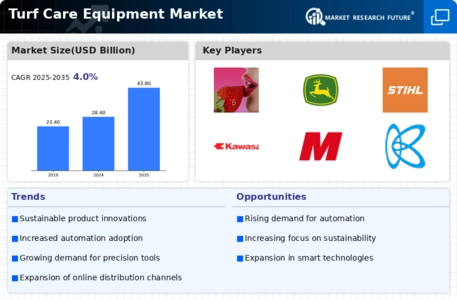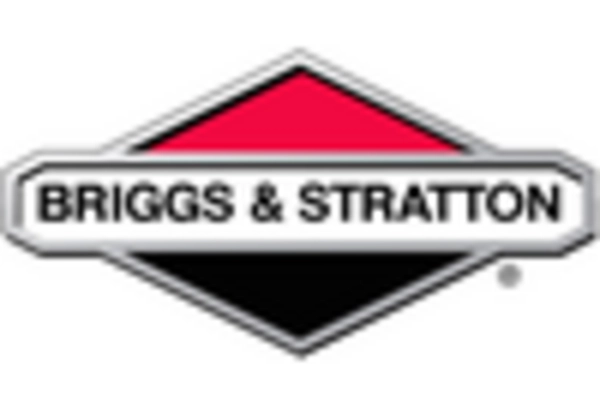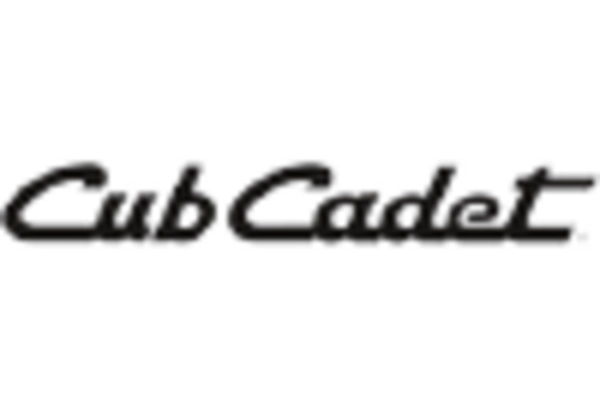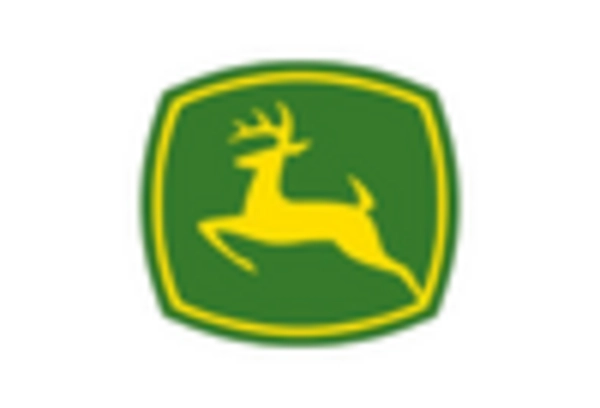The Turf Care Equipment Market is currently characterized by a dynamic competitive landscape, driven by increasing consumer demand for efficient and sustainable lawn care solutions. Key players such as John Deere (US), Husqvarna (SE), and Toro (US) are at the forefront, each adopting distinct strategies to enhance their market positioning. John Deere (US) emphasizes innovation through advanced technology integration in its equipment, while Husqvarna (SE) focuses on sustainability, promoting eco-friendly products. Toro (US) is actively pursuing regional expansion, particularly in emerging markets, thereby diversifying its customer base. Collectively, these strategies contribute to a competitive environment that is increasingly focused on technological advancement and sustainability.
In terms of business tactics, companies are localizing manufacturing to reduce costs and enhance supply chain efficiency. This approach is particularly evident in the moderately fragmented structure of the market, where numerous players vie for market share. The collective influence of major companies shapes the competitive dynamics, as they leverage their operational strengths to optimize production and distribution processes, thereby enhancing their market presence.
In August 2025, John Deere (US) announced a partnership with a leading tech firm to develop AI-driven lawn care solutions. This strategic move is significant as it positions John Deere at the cutting edge of technological innovation, potentially revolutionizing how consumers manage their turf care needs. The integration of AI into their product offerings may lead to enhanced user experiences and operational efficiencies, setting a new standard in the industry.
Similarly, in July 2025, Husqvarna (SE) launched a new line of battery-powered lawn mowers, emphasizing sustainability and reduced carbon footprints. This initiative aligns with the growing consumer preference for environmentally friendly products and reflects Husqvarna's commitment to sustainability. By expanding its product range to include more eco-conscious options, the company is likely to attract a broader customer base, enhancing its competitive edge.
In September 2025, Toro (US) expanded its operations into Southeast Asia, establishing a manufacturing facility in Vietnam. This strategic expansion is crucial as it allows Toro to tap into new markets and respond to the increasing demand for turf care equipment in the region. By localizing production, Toro can reduce shipping costs and improve delivery times, thereby enhancing its overall competitiveness in the global market.
As of October 2025, the Turf Care Equipment Market is witnessing trends such as digitalization, sustainability, and AI integration, which are reshaping competitive dynamics. Strategic alliances are becoming increasingly important, as companies collaborate to enhance their technological capabilities and market reach. Looking ahead, competitive differentiation is likely to evolve from traditional price-based competition to a focus on innovation, technology, and supply chain reliability, underscoring the importance of adaptability in a rapidly changing market.

















Leave a Comment